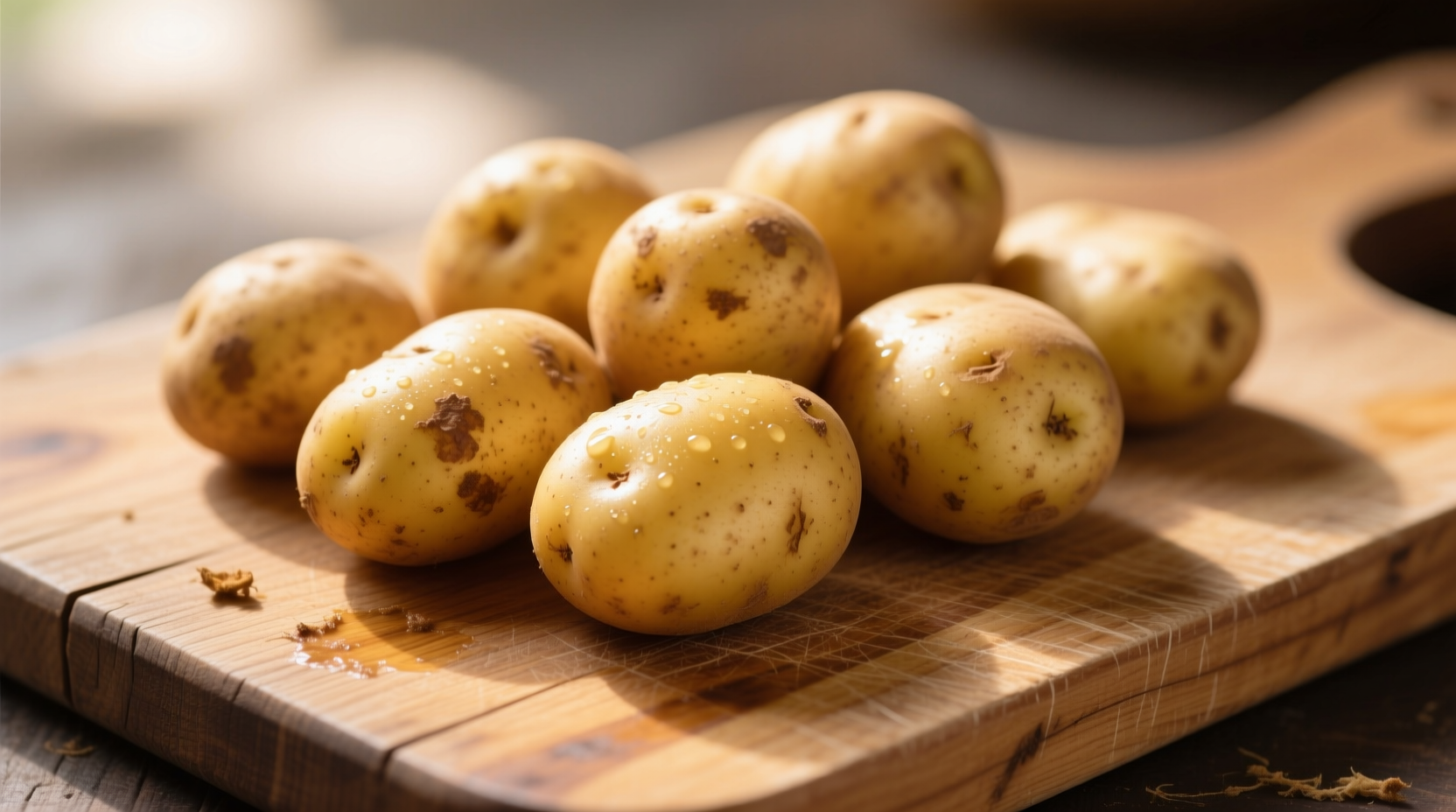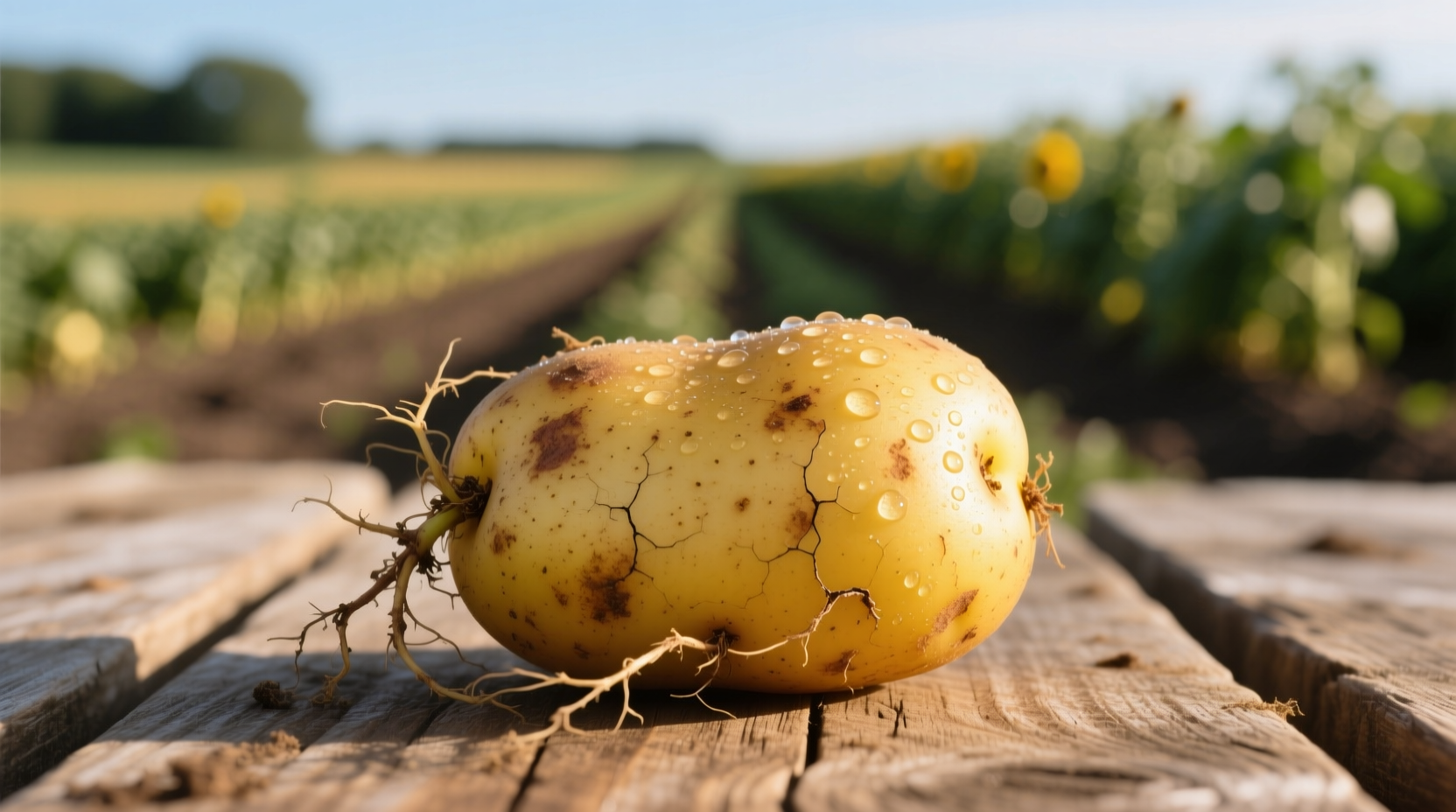Discover why professional chefs and home cooks consistently reach for Yukon Gold potatoes when they want reliable performance and exceptional flavor in their dishes. This comprehensive guide reveals everything you need to know about selecting, storing, and maximizing the potential of this beloved potato variety.
The Origin Story of Yukon Gold Potatoes
Developed in the 1960s by Canadian scientist Dr. Gary Johnston at the University of Guelph, Yukon Gold potatoes were officially released to the public in 1980 after nearly two decades of selective breeding. The variety resulted from crossing a North American white potato with a wild yellow-fleshed potato from South America, creating what would become North America's first commercially successful yellow-fleshed potato variety. According to Agriculture and Agri-Food Canada, Yukon Golds quickly gained popularity for their superior taste and versatility, revolutionizing how cooks approached potato-based dishes.

Physical Characteristics That Set Them Apart
Yukon Gold potatoes feature distinctive light yellow, netted skin and deep yellow flesh that maintains its color even after cooking. Their oval shape with medium eyes makes them easy to peel or leave unpeeled for rustic dishes. Unlike Russet potatoes with their thick brown skin, Yukon Golds have a thinner, more delicate skin that contributes to their creamy texture when cooked properly.
Flavor Profile and Texture Science
The magic of Yukon Gold potatoes lies in their balanced starch-to-moisture ratio. With approximately 16% starch content—higher than waxy potatoes but lower than starchy Russets—they deliver the perfect middle ground for multiple cooking methods. Food scientists at Cornell University have documented how Yukon Golds' unique carotenoid compounds (specifically lutein and zeaxanthin) contribute to both their golden color and subtle buttery flavor profile, eliminating the need for excessive added fats in many preparations.
Nutritional Benefits Backed by Research
According to USDA FoodData Central, a medium Yukon Gold potato (150g) provides:
| Nutrient | Amount per Serving | % Daily Value |
|---|---|---|
| Calories | 110 | 5% |
| Carbohydrates | 26g | 9% |
| Fiber | 2g | 8% |
| Vitamin C | 27mg | 30% |
| Potassium | 620mg | 18% |
Notably, Yukon Golds contain more vitamin C and potassium than Russet potatoes while providing significant amounts of B vitamins and magnesium. Their naturally occurring carotenoids function as antioxidants, contributing to overall nutritional value beyond basic carbohydrates.
Optimal Cooking Applications by Method
Mashing Perfection
Yukon Golds require 30% less butter and cream than Russets to achieve the same creamy consistency. Their naturally buttery flavor and medium starch content create velvety smooth mash without becoming gluey. For best results, boil until fork-tender, drain thoroughly, and warm the pot before mashing to eliminate excess moisture.
Roasting Excellence
Cut into 1.5-inch chunks and toss with olive oil, salt, and fresh herbs. Roast at 400°F (200°C) for 35-40 minutes until golden brown and crisp-edged. The natural sugars in Yukon Golds caramelize beautifully, creating a sweet contrast to their creamy interior. Unlike waxy potatoes that can become tough when roasted, Yukon Golds develop the perfect texture combination.
Boiling and Steaming
When boiling Yukon Golds for potato salad, leave the skins on to prevent water absorption that can make them mushy. Their thin skin holds together well during cooking, and the vibrant yellow color makes for an attractive presentation. For soups and stews, add Yukon Golds during the last 15-20 minutes of cooking to maintain their shape.
When to Choose Yukon Gold Over Other Varieties
Understanding potato starch content is crucial for recipe success. This comparison helps you select the right potato for your culinary needs:
| Potato Type | Starch Content | Best Uses | When to Avoid |
|---|---|---|---|
| Yukon Gold | Medium (15-18%) | Mashing, roasting, boiling, soups | Fried potatoes, long-cooking stews |
| Russet | High (20-22%) | Baking, frying, fluffy mashed potatoes | Potato salad, gratins |
| Red Potato | Low (12-14%) | Potato salad, roasting, boiling | Fluffy mashed potatoes |
| Sweet Potato | Medium (14-16%) | Roasting, baking, purees | Traditional potato dishes |
Storage Tips for Maximum Freshness
Store Yukon Gold potatoes in a cool, dark place with good ventilation—never in the refrigerator, which converts starches to sugars and creates off-flavors. Keep them away from onions, which release gases that accelerate sprouting. For optimal flavor and texture, use within 2-3 weeks of purchase. If you notice slight sprouting, simply remove the sprouts before cooking; the potato remains safe to eat as long as it's firm.
Seasonality and Availability Guide
While available year-round thanks to modern storage techniques, Yukon Gold potatoes reach peak quality from late summer through fall when newly harvested. During winter and spring months, you're typically purchasing potatoes from controlled atmosphere storage, which maintains quality but may lack the vibrant flavor of freshly harvested tubers. Farmers' markets often offer the freshest Yukon Golds during harvest season, while grocery stores provide consistent year-round availability.
Common Mistakes to Avoid
- Using cold potatoes directly from storage (allow to come to room temperature first)
- Overcooking, which breaks down their delicate structure
- Adding cold dairy to hot potatoes (warms dairy first to prevent gumminess)
- Peeling before boiling (removes nutrients and causes water absorption)











 浙公网安备
33010002000092号
浙公网安备
33010002000092号 浙B2-20120091-4
浙B2-20120091-4